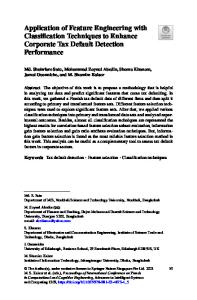Reverse Engineering: Learning from Proteins How to Enhance the Performance of Synthetic Nanosystems
- PDF / 489,340 Bytes
- 7 Pages / 612 x 792 pts (letter) Page_size
- 99 Downloads / 292 Views
Reverse Engineering: Learning from Proteins How to Enhance the Performance of Synthetic Nanosystems Viola Vogel Abstract Proteins are nature’s workhorses. They enable living systems to use available energy sources and convert energy from one form into another. Understanding the underlying design principles of how proteins have evolved to fulfill the necessary functions of life can provide researchers with new insights into how to enhance the performance of synthetic nanosystems with far greater sophistication. This review summarizes the relationship between various protein functions and the underlying engineering principles of their overall structures. For example, proteins can specifically recognize other biomolecules with a selectivity and affinity several orders of magnitude superior to their synthetic counterparts. Mimicking a protein binding site with a structurally fixed synthetic analogue is insufficient, since structural changes in the active sites enhance molecular recognition and the catalytic activity of proteins. Recent data also show that protein function can be switched by stretching proteins into nonequilibrium states under physiological conditions. Schemes by which the exposure and structure of recognition sites are switched can be implemented in the design of mechanically responsive synthetic and hybrid systems. Motor proteins, finally, are the jewel in nature’s crown, as they can convert one free-energy form into another to generate mechanical force. It is thus of considerable interest to integrate the chemically powered engines into synthetic materials and devices. Finally, we have to advance our ability to assemble nanocomponents into functional systems. Again, lessons can be learned from how biology solves the challenge of systems integration. Keywords: cell signaling, forced-unfolding pathways, molecular shuttles, motor proteins, nanosystems, specific recognition, structural fluctuations, structure/function relations, tissue engineering.
Proteins Are Nature’s Workhorses While Moore’s law has accurately predicted the speed at which logic devices have become miniaturized, thanks to in-
972
creasingly sophisticated top-down fabrication tools (Figure 1), we are approaching the limit at which many macroscopic de-
sign principles fail if further miniaturized. This poses a dilemma, since miniaturization efforts are driven by market factors that include a desire to use our limited resources more efficiently. Are there alternatives to the top-down approach to miniaturization? How can we fabricate, for example, tiny devices from a few thousand atoms? Nature relies entirely on molecular selfassembly strategies to engineer its materials and devices from the nanoscale upward. Thus, an endless arsenal of molecular building blocks has evolved, furnished with different functionalities, in sizes ranging from a few angstroms to several hundred nanometers. In contrast to synthesized structures, many of nature’s building blocks themselves are not passive units. They often serve additional functions, from sens
Data Loading...











